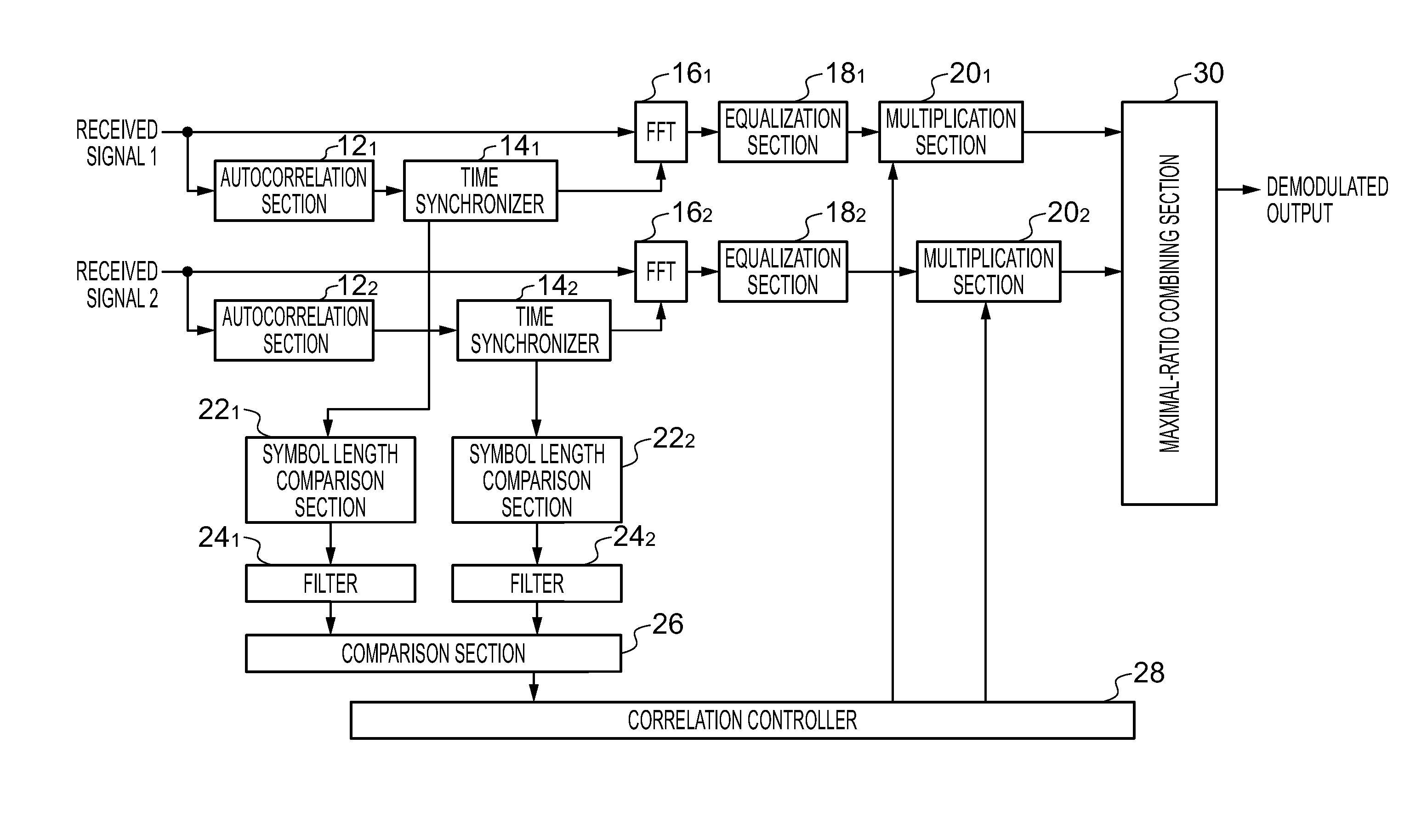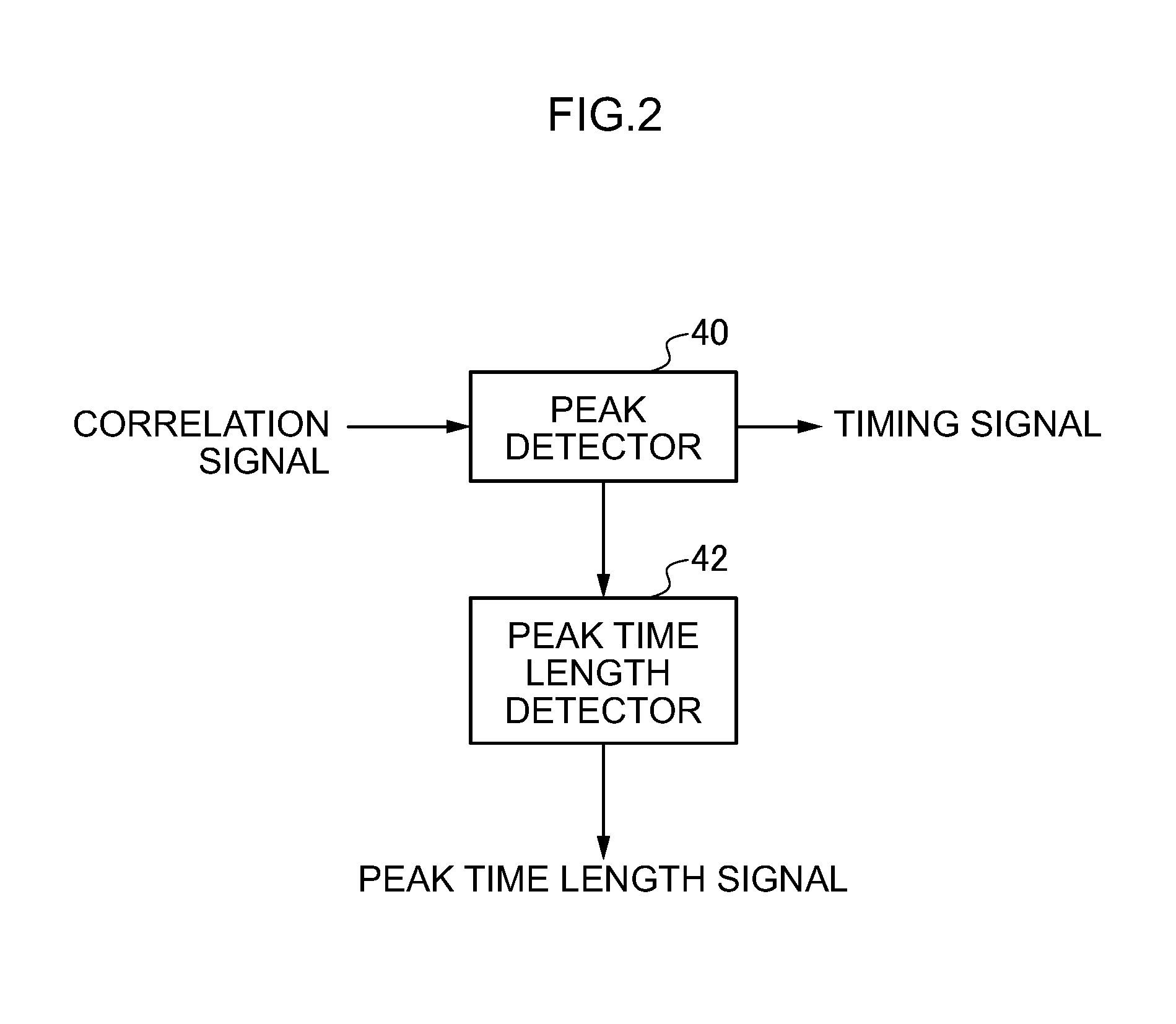Diversity reception device and diversity reception method
a technology of diversity and reception device, applied in the field of diversity reception device and diversity reception method, can solve the problems of demodulated signal, expectation, poor maximal-ratio combining results, and inability to obtain excellent maximal-ratio combining results
- Summary
- Abstract
- Description
- Claims
- Application Information
AI Technical Summary
Benefits of technology
Problems solved by technology
Method used
Image
Examples
first exemplary embodiment -
[0046]-First Exemplary Embodiment-
[0047]FIG. 1 is a diagram illustrating structure of a diversity reception device relating to a first exemplary embodiment, which diversity-receives orthogonal frequency division multiplexing (OFDM) signals. The diversity reception device of the present exemplary embodiment is described as being a device that includes two branches, a first branch and a second branch. Herein, processing sections (reception systems) for processing received signals that are provided in correspondence with respective antennas are referred to as branches.
[0048]The diversity reception device relating to the present exemplary embodiment is provided, at each branch, with an autocorrelation section 12, a time synchronizer 14, a fast Fourier transform section (FFT) 16, an equalization section 18, a multiplication section 20, a symbol length comparison section 22, and a filter 24. In FIG. 1, in order to distinguish between structural elements of the first branch and structural ...
second exemplary embodiment
[0088]-Second Exemplary Embodiment-
[0089]FIG. 6 illustrates structure of a diversity reception device of a second exemplary embodiment. In the diversity reception device of the present exemplary embodiment, the diversity reception device with two branches that is illustrated in the first exemplary embodiment is generalized to a diversity reception device with n branches (n being an integer that is at least two). The structures corresponding to each branch are the same as in the first exemplary embodiment. A concrete example of operation of the comparison section 26 and correlation controller 28 relating to the present exemplary embodiment is now described in detail.
[0090]The comparison section 26 relating to the present exemplary embodiment finds each of the following (A) to (D) from the filter outputs of the branches.
[0091](A) The smallest value of the filter outputs of all the branches (hereinafter referred to as the smallest filter output)
[0092](B) Respective differences between ...
third exemplary embodiment -
[0125]-Third Exemplary Embodiment-
[0126]FIG. 9 illustrates structure of a diversity reception device relating to a third exemplary embodiment. The diversity reception device of the present exemplary embodiment includes n branches (n being an integer that is at least two) and controls the gains of the branches using, instead of the peak time length, a ratio between a power level (peak level) at a peak position of the correlation signal and an integral of the level of the correlation signal in a time period from the preceding peak position (one cycle before) to the current peak position.
[0127]In FIG. 9, structural elements that are the same as in FIG. 6 are assigned the same reference numerals and descriptions thereof are omitted or simplified. Herebelow, structural elements that differ from FIG. 6 are described in detail.
[0128]The diversity reception device relating to the present exemplary embodiment is provided with, at each branch, the autocorrelation section 12, a time synchroniz...
PUM
 Login to View More
Login to View More Abstract
Description
Claims
Application Information
 Login to View More
Login to View More - R&D
- Intellectual Property
- Life Sciences
- Materials
- Tech Scout
- Unparalleled Data Quality
- Higher Quality Content
- 60% Fewer Hallucinations
Browse by: Latest US Patents, China's latest patents, Technical Efficacy Thesaurus, Application Domain, Technology Topic, Popular Technical Reports.
© 2025 PatSnap. All rights reserved.Legal|Privacy policy|Modern Slavery Act Transparency Statement|Sitemap|About US| Contact US: help@patsnap.com



